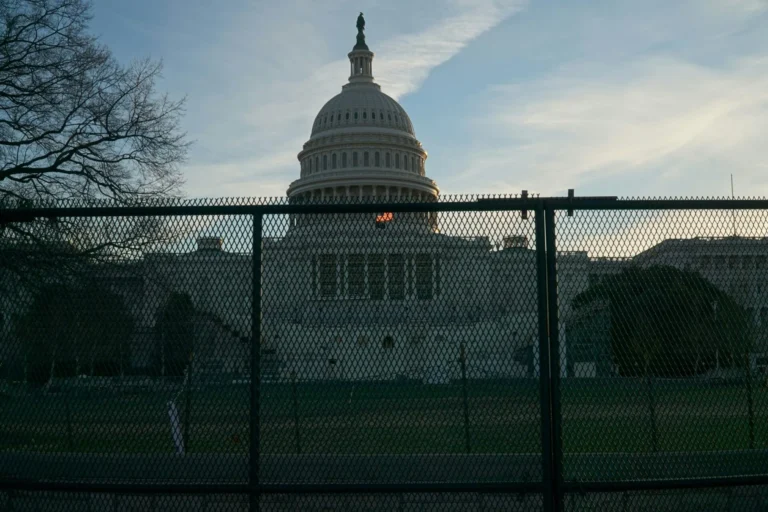‘The United States has not met its national security goals to destroy terrorist threats and close the safe haven in Pakistan,’ states the GAO study. Bush Lacks Comprehensive Plan To Destroy Al-Qaeda: Gov’t StudyBy Cliff Montgomery – Apr. 22nd, 2008An April 2008 study from the Government Accountability Office (GAO) has revealed a startling fact: Six and a half years after the vicious Sept. 11th, 2001, terror attacks on America by al-Qaeda, the Bush Administration still has not created a comprehensive plan to hunt down and destroy the heart of the terrorist network, which currently operates from the Afghanistan/Pakistan border.What Bush has created seems almost an afterthought, as he has left the real responsibility in finding the leaders of the terrorist network almost entirely to Pakistan–a predominately Muslim nation which has close ties to the al-Qaeda allies known as the Taliban.Below we offer numerous telling quotes from the eye-opening GAO report:“The terrorist attacks of 9/11 were planned from an Afghan safe haven, and many of the terrorists who attacked the United States used Pakistan as the main route to travel from Afghanistan to the United States.”Since the 9/11 attacks in 2001, the administration and Congress have repeatedly stated that destroying terrorist threats and closing terrorist safe havens are the nation’s critical national security goals.”As such, the United States has provided Pakistan, which has become a key U.S. ally in the global war on terror, with more than $10.5 billion for military, economic, and development activities in support of these goals.”The 9/11 Commission, an independent, bipartisan commission created by congressional legislation in late 2002, concluded in 2004 that it is hard to overstate the importance of Pakistan in the struggle against Islamist terrorism. The commission found that the country’s vast unpoliced regions have made it attractive to extremists seeking a safe haven and have reportedly provided a base for terrorist operations against U.S. and coalition forces in Afghanistan.”Following the defeat of the Taliban in Afghanistan, al Qaeda and Taliban fighters are believed to have retreated across the Afghan border and into Pakistan’s Federally Administered Tribal Areas (FATA) in an effort to re-establish a terrorist safe haven.”[But] the United States has not met its national security goals to destroy terrorist threats and close the safe haven in Pakistan’s FATA.”Since 2002, the United States [has] relied principally on the Pakistan military to address U.S. national security goals. Of the approximately $5.8 billion the United States provided for efforts in the FATA and border region from 2002 through 2007, about 96 percent reimbursed Pakistan for military operations there.”According to the Department of State, Pakistan deployed 120,000 military and paramilitary forces in the FATA and helped kill and capture hundreds of suspected al Qaeda operatives; these efforts cost the lives of approximately 1,400 members of Pakistan’s security forces.”However, GAO found broad agreement, as documented in the National Intelligence Estimate, State, and embassy documents, as well as Defense officials in Pakistan, that al Qaeda had regenerated its ability to attack the United States and had succeeded in establishing a safe haven in Pakistan’s FATA.”No comprehensive plan for meeting U.S. national security goals in the FATA has been developed, as stipulated by the National Strategy for Combating Terrorism (2003), called for by an independent commission (2004), and mandated by congressional legislation (2007).”Furthermore, Congress created the National Counterterrorism Center (NCTC) in 2004 specifically to develop comprehensive plans to combat terrorism. However, neither the National Security Council (NSC), NCTC, nor other executive branch departments have developed a comprehensive plan that includes all elements of national power—diplomatic, military, intelligence, development assistance, economic, and law enforcement support—called for by the various national security strategies and Congress.”As a result, since 2002, the U.S. embassy in Pakistan has had no Washington-supported, comprehensive plan to combat terrorism and close the terrorist safe haven in the FATA.”In 2006, the embassy, in conjunction with Defense, State, and U.S. Agency for International Development (USAID), and in cooperation with the government of Pakistan, began an effort to focus more attention on other key elements of national power, such as development assistance and public diplomacy, to address U.S. goals in the FATA. However, this does not yet constitute a comprehensive plan.”GAO recommends that the National Security Advisor and the Director of the NCTC, in consultation with the Secretaries of Defense and State and others, implement the congressional mandate to develop a comprehensive plan to combat the terrorist threat and close the safe haven in the FATA.”Defense and USAID concurred with the recommendation; State asserted that a comprehensive strategy exists, while the Office of the Director of National Intelligence stated that plans to combat terrorism exist.”The NSC provided no comments.”[But] in GAO’s view, these plans have not been formally integrated into a comprehensive plan as called for by Congress.”Like what you’re reading so far? Then why not order a full year (52 issues) of thee-newsletter for only $15? A major article covering an story not being told in the Corporate Press will be delivered to your email every Monday morning for a full year, for less than 30 cents an issue. Order Now!

Disobeying Illegal Orders Is A Military Duty, Not A Crime
The truth is that soldiers have a legal duty to refuse any order that clearly breaks the law, according to the Uniform Code of Military Justice.




